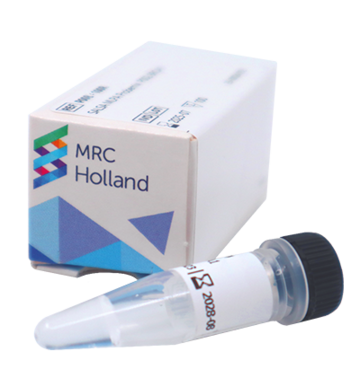P211 HSP region

SALSA MLPA Probemix P211 HSP region detects copy number variations in the SPAST and NIPA1 genes.

Contents: 39 MLPA probes, including 13 probes for the 2p22.3 region (SPAST region, DPY30 and SLC30A6), and 13 probes for the 15q11.2 region (HERC2P2, GOLGA6L2, WHAMML1, NIPA1, NIPA2, TUBGCP5, CYFIP1 and MAGEL2).

Tissue: human genomic DNA.

Application: research on hereditary spastic paraplegias (HSPs).

For research use only (RUO). Not for use in diagnostics.
